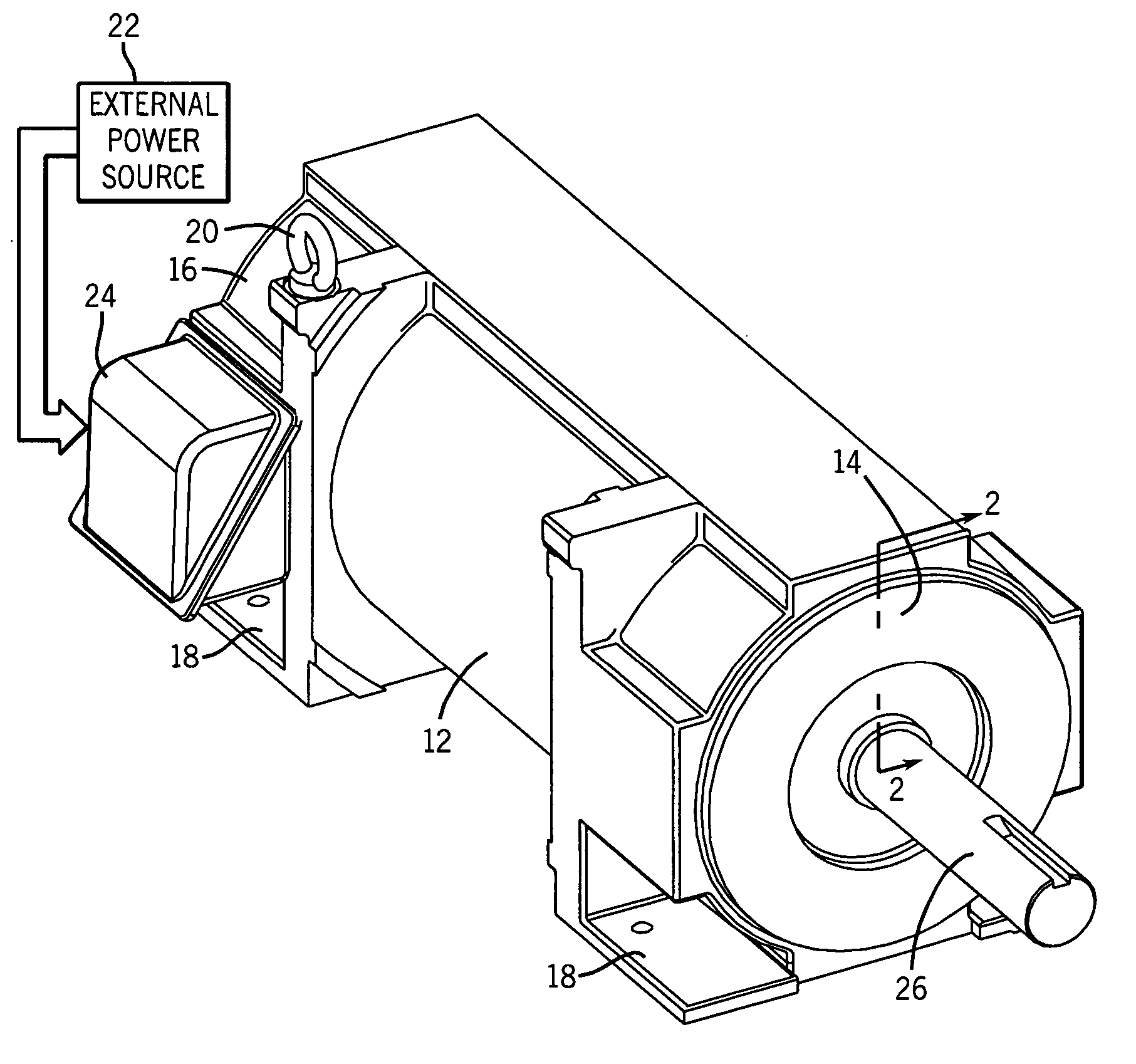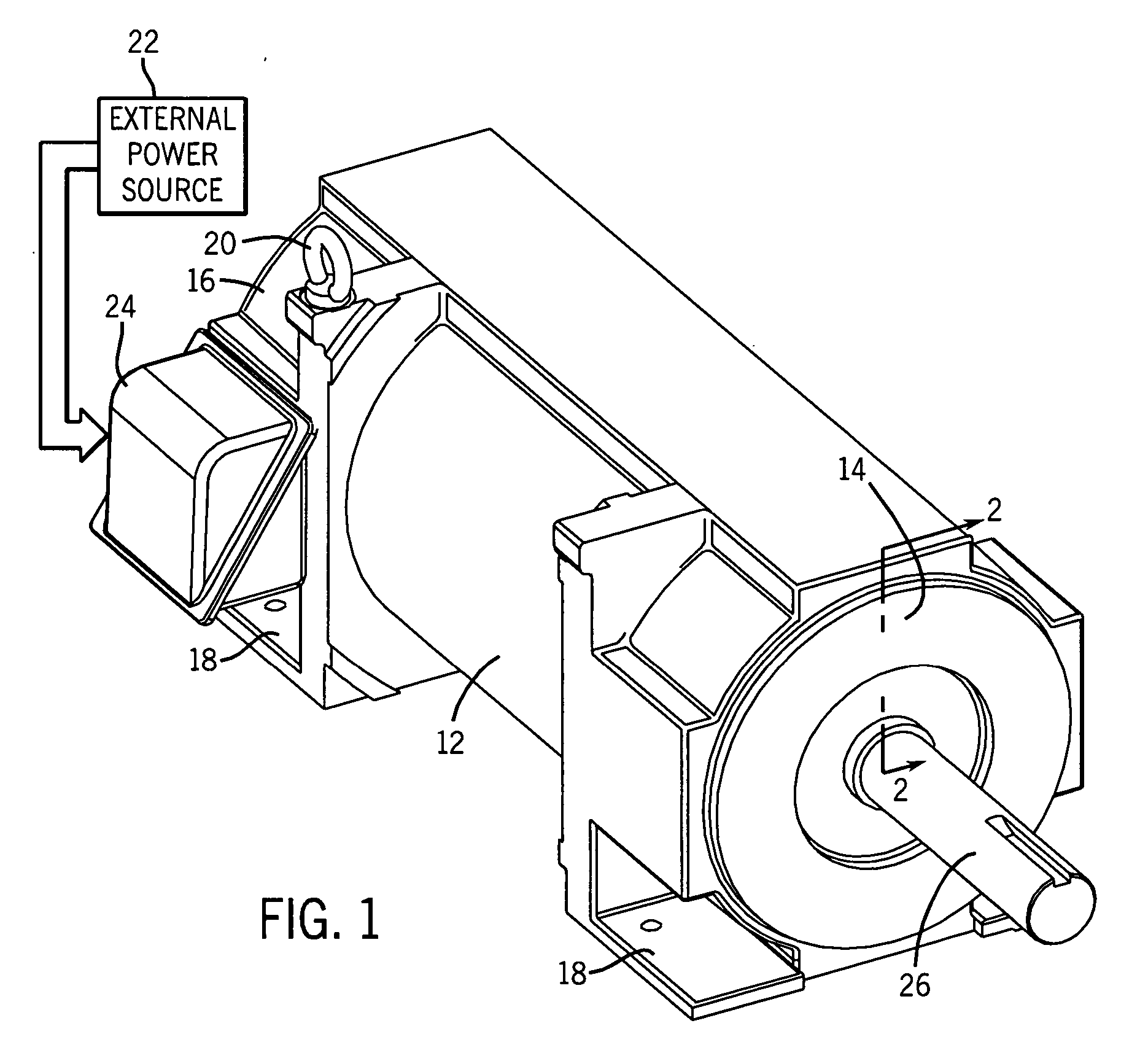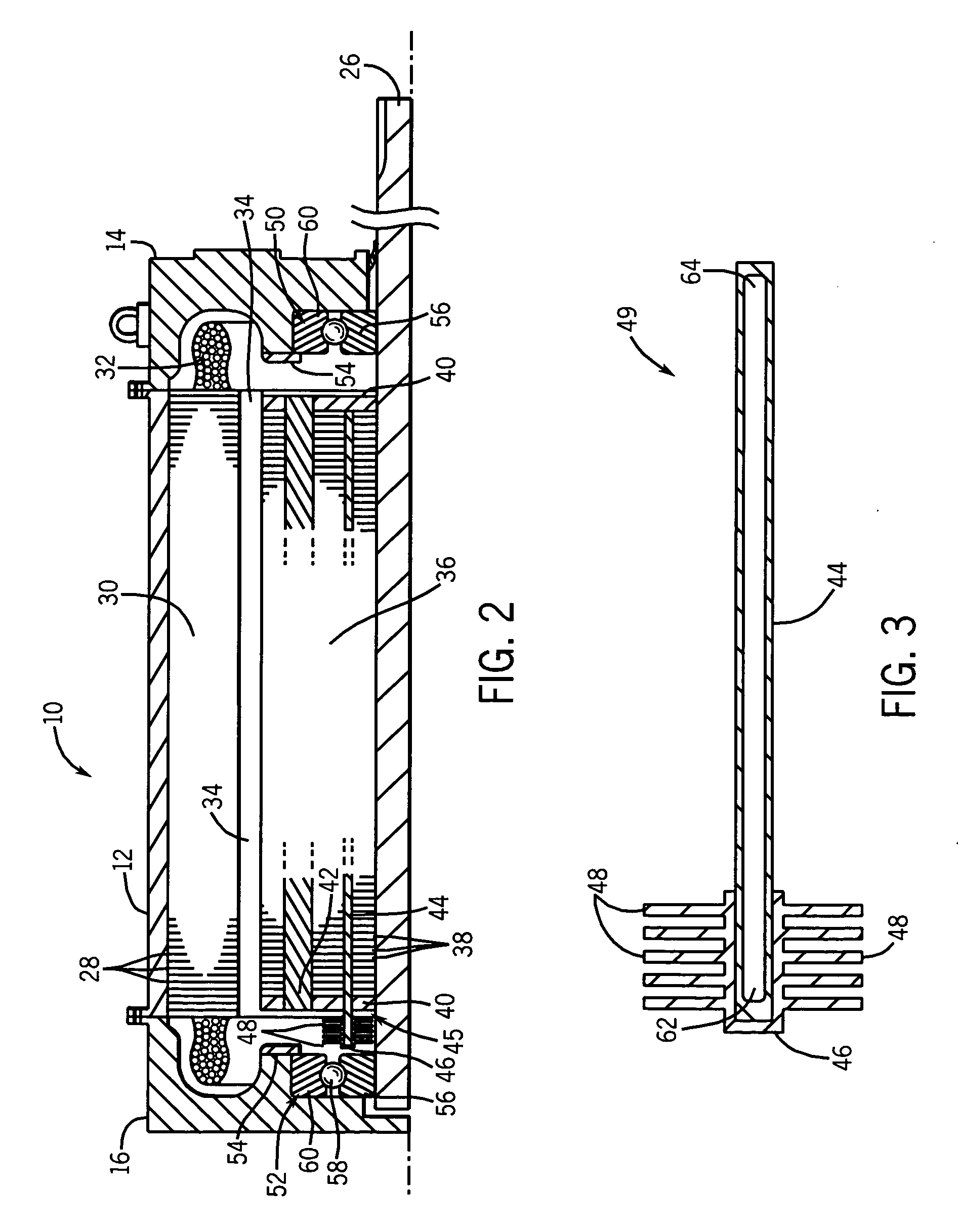Motor rotor cooling with rotation heat pipes
a technology of heat pipes and rotors, which is applied in the direction of dynamo-electric machines, magnetic circuit rotating parts, magnetic circuit shape/form/construction, etc., can solve the problems of system downtime, maintenance, and motor performance degradation, and achieve the effect of reducing the size, facilitating the formation of liquid films, and not compromising the structural integrity of the rotor sha
- Summary
- Abstract
- Description
- Claims
- Application Information
AI Technical Summary
Benefits of technology
Problems solved by technology
Method used
Image
Examples
Embodiment Construction
[0030] As discussed in detail below, embodiments of the present technique provide for cooling of electric motors. Although the discussion regarding the present technique focuses on electric motors, it also affords benefits to a number of applications in which the cooling of a rotating element is a concern. Accordingly, the following discussion relates to exemplary embodiments of the present invention and, as such, should not be viewed as limiting the appended claims to the embodiments described.
[0031] Turning to the drawings, FIG. 1 illustrates an exemplary electric motor 10. In the embodiment illustrated, the motor 10 comprises an induction motor housed in a National Electrical Manufacturers' Association (NEMA) motor housing. Industry associations, such as NEMA, develop particular standards and parameters for the construction of motor housings or enclosures. Of course, the present technique is applicable to a variety of motor housing constructions and is not limited to NEMA housin...
PUM
 Login to View More
Login to View More Abstract
Description
Claims
Application Information
 Login to View More
Login to View More - R&D
- Intellectual Property
- Life Sciences
- Materials
- Tech Scout
- Unparalleled Data Quality
- Higher Quality Content
- 60% Fewer Hallucinations
Browse by: Latest US Patents, China's latest patents, Technical Efficacy Thesaurus, Application Domain, Technology Topic, Popular Technical Reports.
© 2025 PatSnap. All rights reserved.Legal|Privacy policy|Modern Slavery Act Transparency Statement|Sitemap|About US| Contact US: help@patsnap.com



